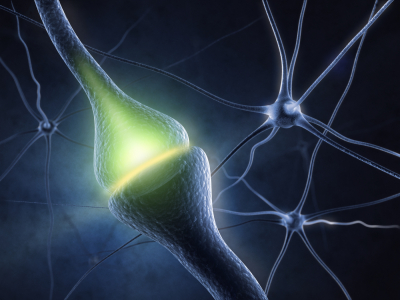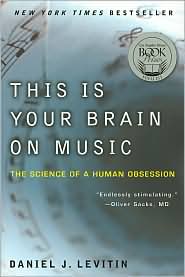
neuroscience
A Food for Happiness? Go Fish

We’ve heard that omega-3 fatty acids, such as those from various fish sources, have important anti-inflammatory, as well as cardiac health benefits.
In fact, WebMD has an Omega-3 Fatty Acid Fact Sheet with so much positive health information that you may add “Buy wild-caught salmon” to your list of things to do on the way home tonight.
In other words, eating fish is a no-brainer, right? Continue reading “A Food for Happiness? Go Fish”
Seeing the Potential
 I had never heard of Halorubrum sodomense until a few days ago. It’s name describes it pretty well, it is a salt-tolerant (Halophilic) organism that contains the red-colored photosynthetic pigment archaerhodopsin, and it was originally isolated from the region of Sodom near the Dead Sea. It’s an organism that is well-known only to those with reason to study it. Many of the rest of us will never have cause to say its name, or to even remember it, and may even occasionally wonder why it is studied at all.
I had never heard of Halorubrum sodomense until a few days ago. It’s name describes it pretty well, it is a salt-tolerant (Halophilic) organism that contains the red-colored photosynthetic pigment archaerhodopsin, and it was originally isolated from the region of Sodom near the Dead Sea. It’s an organism that is well-known only to those with reason to study it. Many of the rest of us will never have cause to say its name, or to even remember it, and may even occasionally wonder why it is studied at all.
Halorubrum sodomense was in the news recently because a genetically engineered form of its rhodopsin was used to create a method that lights up mammalian neurons as they fire. This exciting development was reported in a paper by Kralj et al, published in the Nov 27 issue of Nature Methods. Continue reading “Seeing the Potential”
The Makings Of A Cerebral Music Decoder
A Review Of Daniel Levitin’s This Is Your Brain On Music
ISBN: 978-0-452-28852-2
Physicist Emerson Pugh once quipped, “if the human brain were so simple that we could understand it, we would be so simple that we couldn’t” [1]. In his book This Is Your Brain On Music neuroscientist Daniel Levitin notes how the number of ways that brain neurons can connect is so vast that we will never fully comprehend all the thought processes that we are capable of.
In recent years, mapping techniques have revealed a lot about the functional regions of the brain. Wernicke’s area is responsible for language processing, the motor cortex for physical movement and frontal lobes for generating personalities. Both encephalography and MRI have given us key spatial-temporal data about brain function in these regions. But we also find that activities such as listening to music contravene such a simplistic compartmentalization.
In fact the perception of pitch, tempo, the emotions invoked by a piece of music and the lyrics of a song all use different parts of the brain albeit simultaneously. Levitin repeatedly emphasizes the multi-faceted aspects of the music ‘experience’ noting how a, “precision choreography of neurochemical release and uptake” leads to our appreciation of music. The brain is thus a massively parallel device, capable of carrying out several different tasks at once.
Shining Light on the Walking Pathway
![]() Central pattern generators (CPGs) are neural networks in the spinal cord that generate the rhythmic patterns observed in many complex movements like chewing, breathing and walking. Within CPGs excitatory glutamatergic neurons have been implicated in generating these rhythmic patterns, and glutamatergic neurons in the hindbrain region that extend into the spinal cord are thought to be important in initiating locomotion. However, direct evidence of the involvement of these neurons in such activities has been hard to obtain.
Central pattern generators (CPGs) are neural networks in the spinal cord that generate the rhythmic patterns observed in many complex movements like chewing, breathing and walking. Within CPGs excitatory glutamatergic neurons have been implicated in generating these rhythmic patterns, and glutamatergic neurons in the hindbrain region that extend into the spinal cord are thought to be important in initiating locomotion. However, direct evidence of the involvement of these neurons in such activities has been hard to obtain.
In a Nature Neuroscience paper, Hägglund et al. present evidence using a transgenic mouse model that these excitatory neurons are indeed involved in rhythmic pattern generation and initiating locomotion. Continue reading “Shining Light on the Walking Pathway”

